Gnocchi (pronounced no-key) seems to have grown in popularity over the last decade and is now commonly found on restaurant menus and available ready-made from supermarkets.
But is gnocchi vegan? As we will see, we can’t give you a straight answer, but the good news is that vegan gnocchis are a thing.
Is gnocchi vegan?

Sometimes yes, sometimes no… it all depends on the variation you’re buying.
Gnocco, the singular of gnocchi, is a delicious pillow of pasta, usually covered in a tomato or dairy-based sauce. The word stems from the Italian for ‘node’, which is also applied to knuckles, describing the shape of the rounded, textured dumplings (yes, gnocchi are dumplings).
Gnocchi is traditionally made of potato or semolina, but there are many regional variations and modern interpretations of this classic dish:
- The gnocchi we tend to see most often in the UK is made with potato, however, the first gnocchi was formed with flour and water.
- Other types of gnocchi include gnocchi alla Romana, which is made with semolina and baked in the oven, after having been cut into disks and layered in a tray.
- Malloreddus, or Sardinian gnocchi, is made with durum wheat semolina, while ricotta gnocchi is, you’ve guessed it, made with ricotta.
However, the most common recipe for gnocchi uses cooked potato, flour, and egg, which makes it non-vegan. Other common non-vegan gnocchi ingredients are milk, butter, and cheese.
But as we said in the intro, these non-vegan additions are not essential to produce good gnocchi and as we will see further in this article, vegan gnocchi is very easy to make and many vegan options are available, even at your local supermarket.
How to make sure you get vegan gnocchi
As we’ve said above, powdered milk, egg, and cheese are the most common non-dairy ingredients to look for in non-vegan gnocchi.
For ready-made supermarket gnocchi, the vast majority is non-vegan, largely using milk powder or being made in factories that also handle dairy or meat products. Additionally, some might have stuffings such as cheese or dairy-based sauces.
As for gnocchi made in restaurants, it is generally not vegan unless stated as such. This is because egg is often used to help better bind the gnocchi together, or cheese can be added to the mixture prior to cooking.
In order to ensure you buy vegan gnocchi, the safest option is to look for vegan labelling. Gluten-free gnocchi is often also vegan, so look in the gluten-free aisle at supermarkets.
If the label does not state the product is vegan, you can check the ingredients list and the allergy information. Dairy products are generally highlighted in bold.
Notes:
- Unlike other types of pasta, gnocchi is rarely available in its dried form (usually made of semolina) in the UK.
- Fresh gnocchi, made with potato, is available in small packets and simply needs to be boiled or fried to be ready to serve.
Vegan gnocchi in your local supermarket
Gnocchi is very simple to make from scratch and a great cooking project to do with children; however, it is time-consuming and messy.
So if you want to save yourself the hassle but still enjoy tasty gnocchi, the easiest solution is to buy ready-made gnocchi.
Gnocchi will usually be sold fresh and kept refrigerated.
Not all gnocchi state clearly that they are vegan, so look out for vegan logos or check on the back of the packet to see if they are labelled suitable for vegans.
To help you on your way we’ve selected a few vegan gnocchi readily available from your local supermarket.
ASDA La Gnoccheria vegan gnocchi
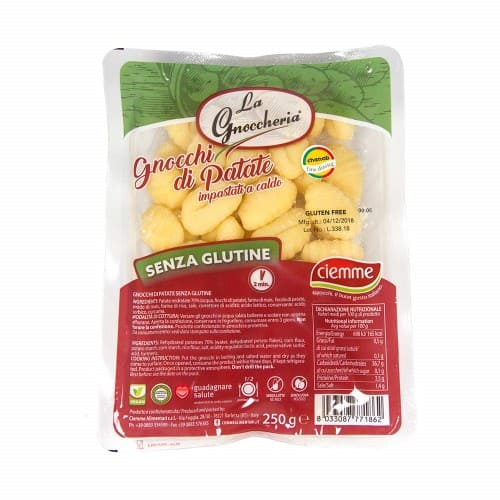
How do you know it’s vegan? Labelled as vegan.
Ingredients: Rehydrated Potatoes 70% (Water, Rehydrated Potato Flakes), Corn Flour, Potato Starch, Corn Starch, Rice Flour, Salt, Acidity Regulator: Lactic Acid, Preservative: Sorbic Acid, Turmeric.
Tesco Farabella Gluton-free Potato Gnocchi
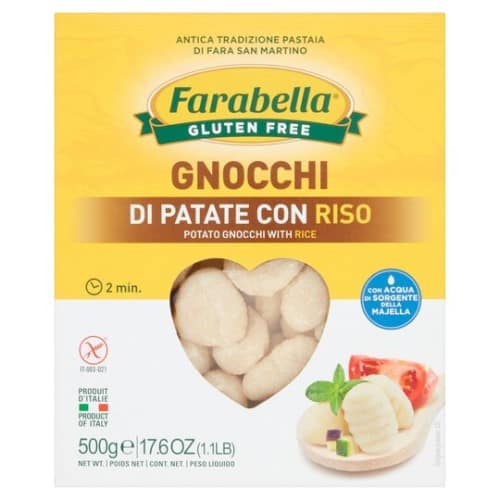
How do you know it’s vegan? Stated as suitable for vegans on the reverse of packaging.
Ingredients: Rehydrated Potato Flakes (85%), Rice Flour (11%), Potato Starch, Salt, Acidity Regulator: Lactic Acid, Preservative: Sorbic Acid
Sainbury’s Difatti Gluten-free gnocchi spinach
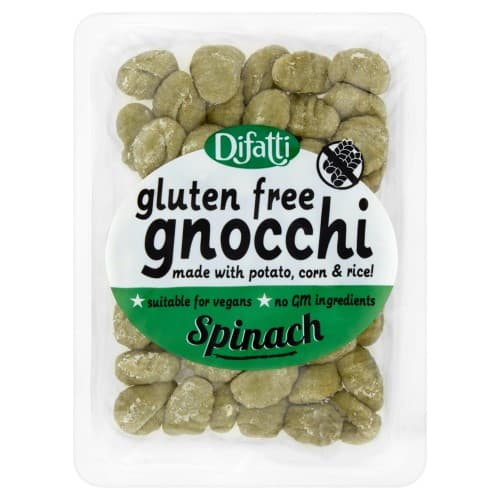
How do you know it’s vegan? Labelled as vegan.
Ingredients: Rehydrated Potato [Water, Potato, Flakes] (70%), Corn Flour, Potato Starch, Corn Starch, Spinach (3%), Rice Flour (3%), Salt, Acidity Regulator: Lactic Acid, Preservative: Sorbic Acid.
Waitrose Dell’ ugo potato gnocchi
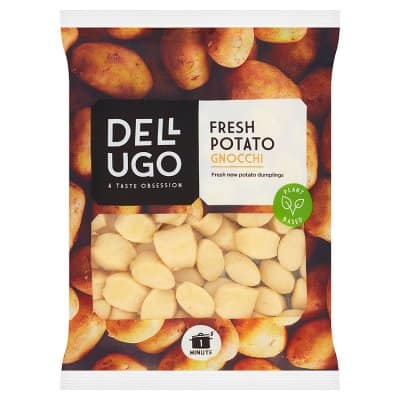
How do you know it’s vegan? Labelled as vegan.
Ingredients: Fresh Potato (74%), Wheat Flour, Salt, Sunflower Oil
Ocado Mr Organic Gluten-free gnocchi
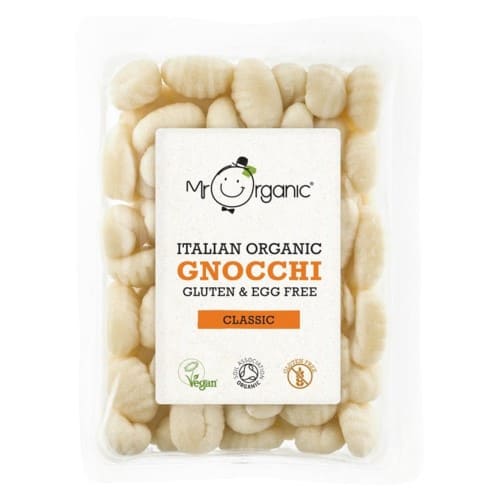
How do you know it’s vegan? Labelled as vegan.
Ingredients: Mashed Potatoes 60% (Water, Potato Flakes), Corn Flour, Potato Starch, Corn Starch, Salt*, Acidity Regulator: Lactic Acid, Dusted with Rice Flour.
Other vegan gnocchi brands
There are several brands that make vegan gnocchi, but few that seem to specialise in it.
However, there are many gnocchi brands that make a range of vegan gnocchis.
Ciemme
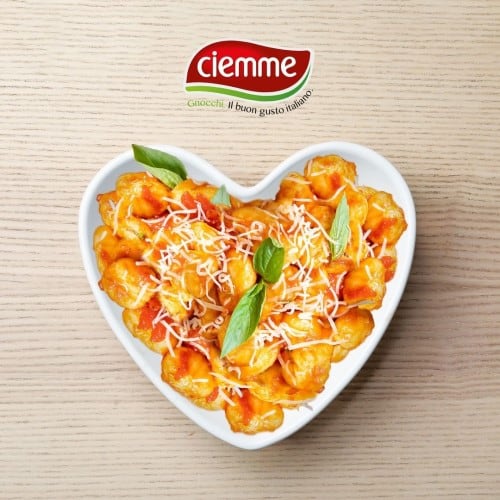
Ciemme is an Italian brand that makes fresh, dried and frozen gnocchi. They make their gnocchi in a traditional manner and offer organic gnocchi as well as many vegan options.
Difatti
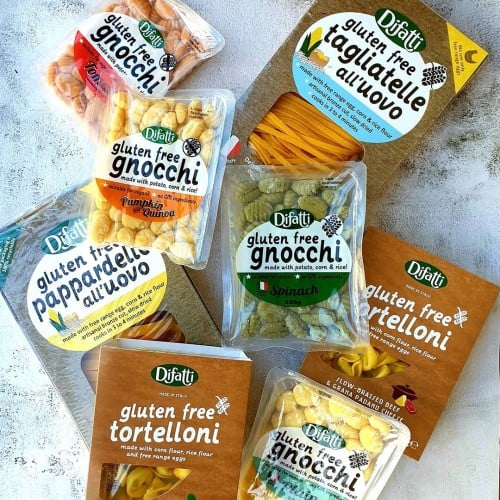
Difatti are another Italian brand. They make a range of gluten-free gnocchi that are also suitable for vegans. As well as gnocchi, they make fresh and dried pasta, as well as pasta sauces; however, not all of these are vegan.
Mr Organic
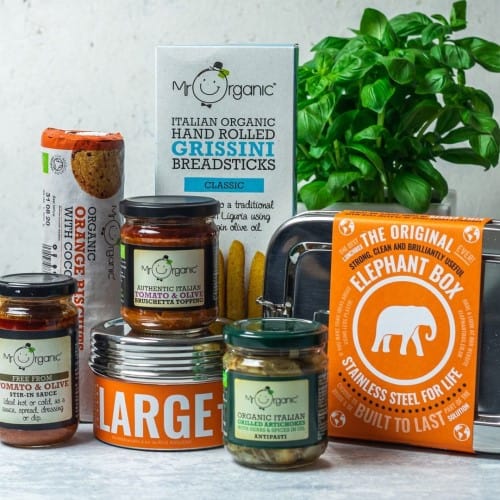
Mr Organic is a vegan brand that is also organic and aims to reduce their environmental footprint as much as possible. However, they currently only make one type of gnocchi.
How to make vegan gnocchi yourself
Homemade vegan gnocchi is surprisingly easy to make:
- The process involves creating a dough by mixing together cooked potato and flour.
- The texture of the dough is very important, ensuring it is not too sticky and not too crumbly.
- The dough is then rolled out into a long thin tube. This tube is cut up into small pieces, roughly the size of a cork.
- The gnocchi can then be patterned, usually with the back of a fork or other kitchen implement. Not all recipes require the gnocchi to be marked but these grooves help to hold the sauce, adding flavour to the gnocchi.
- The gnocchi is then either boiled or fried. Once cooked, a sauce can be added, and it can be served.
In traditional Italian cuisine, gnocchi is usually used as a starter or a side; however, it is often used as a main in modern British meals.
Gnocchi can be used interchangeably with a lot of meals you would use other types of pasta for, meaning you can put a new spin on your old favourites.
It’s also great for fancy dinner parties, impressing everyone with your cooking skills.
Mixing other ingredients in with your gnocchi can also help add new flavours to your dish.
So here are a few vegan gnocchi recipes you could give a try;
Vegan pumpkin gnocchi recipe
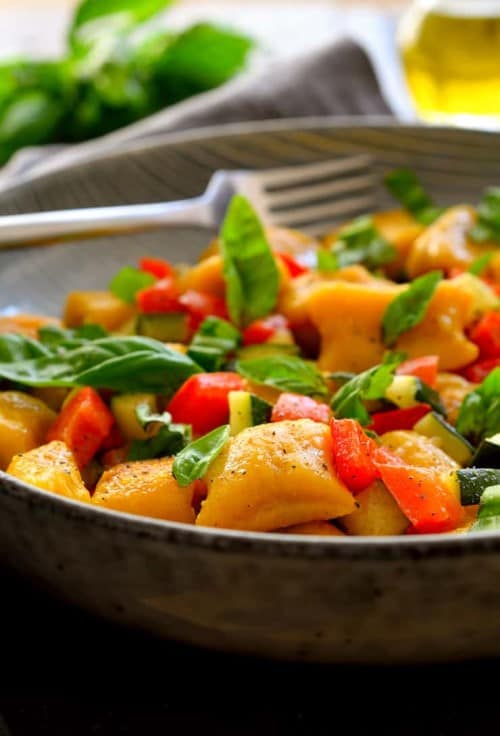
Although traditionally made with potato or semolina, gnocchi can also be made with other vegetables, as long as they can hold together during the cooking process.
Vegan sweet potato gnocchi

Sweet potato is a great alternative to potato to make gnocchi. Not only does this add an extra dimension to the flavour of the gnocchi, it’s also healthier.
Gluten-free vegan gnocchi
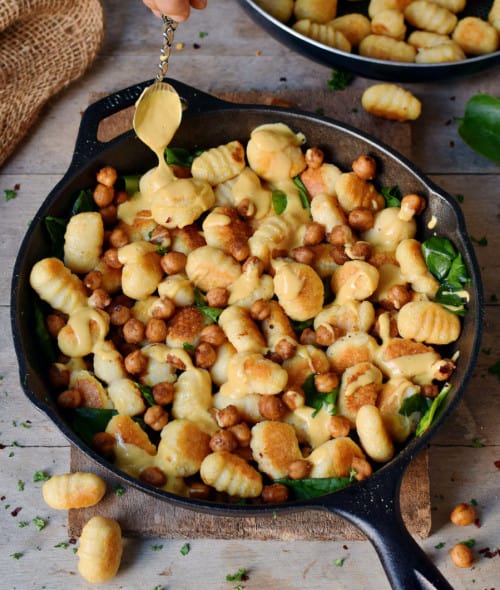
There are a wide range of gluten-free gnocchi available from supermarkets, but why not make your own.
Healthy gnocchi recipe
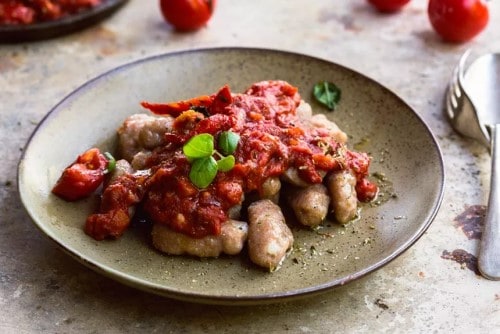
Gnocchi is often a very healthy food; however, you can make it even healthier by adding tasty vegetables or using wholemeal flour.
Vegan gnocchi sauce
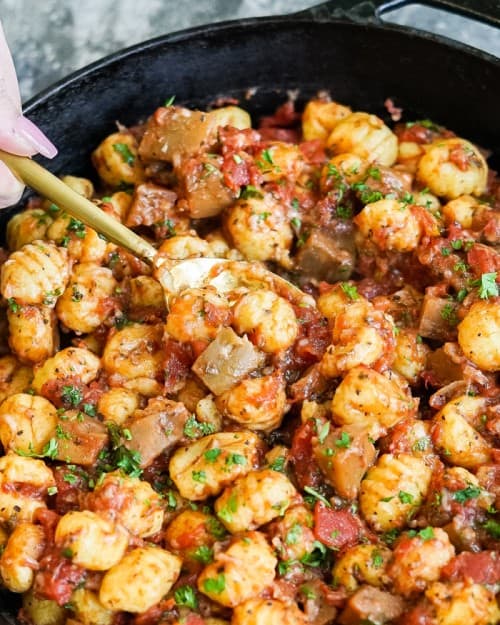
There are many options for vegan gnocchi sauces, just like pasta you can use your gnocchi as your base and experiment with different flavours.
Final thoughts
So when it comes to gnocchi, there’s good news and bad news. The majority of gnocchi sold in restaurants and supermarkets is not vegan.
This is down to commonly used non-vegan ingredients such as egg, milk and cheese.
However, the good news is that vegan gnocchi are still both easy to find and easy to make (and it can be a great family activity). Indeed, in comparison to making other kinds of pasta, gnocchi can be made by even the most amateur of chefs.
Just like other kinds of pasta, you can mix it up. Try different ingredients when making your gnocchi or add different sauces.
So why not branch out from the same old spaghetti rut and go for something new and exciting.
